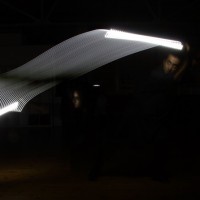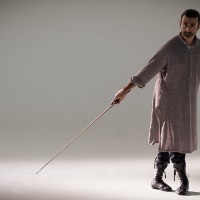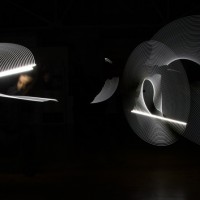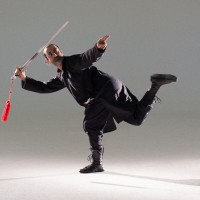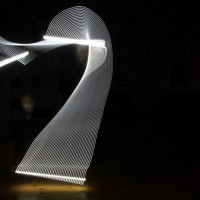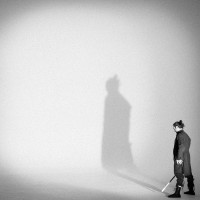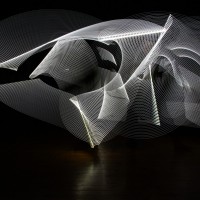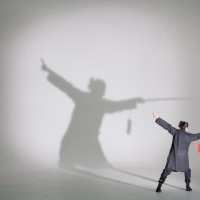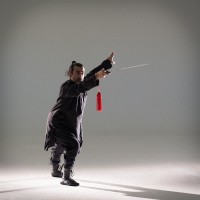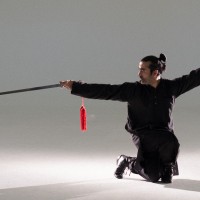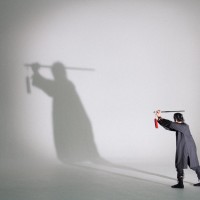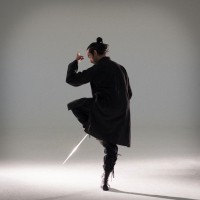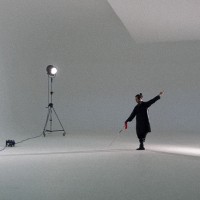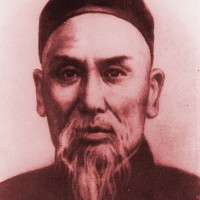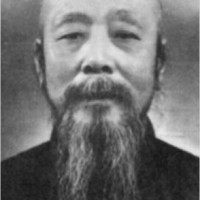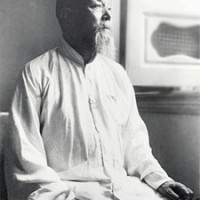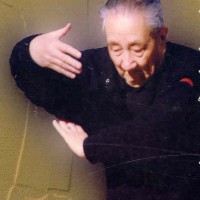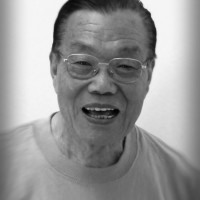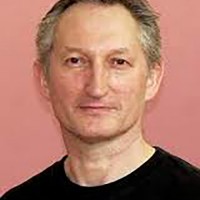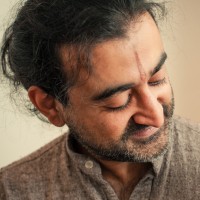Tai Chi (Taiji Quan)
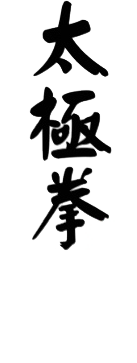
The Art of Taiji Boxing is commonly traced back to a Chang San Feng who probably dates back to the 11 th Century. C.E.. He was a Taoist priest who settled on Wu Dang Mountain and is attributed with the development of the martial strategy known as the ‘Internal School” (nei jia) later to be called Taiji Quan.
Taiji Quan as we know it today underwent significant changes in the early 20th century from a secretive martial art to a more public and less martially oriented exercise/health system. Many of the martial elements were sidelined and even excluded, as forms and methods evolved for a more civil and public audience. As a martial art it was taught to the Manchu guards of the Imperial palace in the late Ching Dynasty, and at the end of Imperial China, high level exponents like Quan You became body guards to politicians and taught the police and army.
Taiji martial roots are readily traceable to the 17 century with threads disappearing further into the distance of Chinese history and legend. The most overtly martial of all the Taiji traditional styles recognised in China is the Chen style and it is widely considered that the Chen style was the root from which the different styles are said to have grown. There is however much conflicting opinion regarding this as the origin of Taiji.
Nevertheless it is undisputed that the great Boxer Yang Lu Chan (1799-1822) studied in Chen village, Chen Jia Guo in Nothern China. This is the ancestral home of the Chen clan. Yang ‘the invincible’ took his skills to Beijing and taught in the Imperial Palace defeating all who challenged him. He passed his knowledge down through his family and 3 primary disciples. One highly skilled disciple was Quan You (Wu family patriach.1834-1902) and father of Wu Jian Quan whose Taiji later gave rise to the Wu style as we know it today.
The history of Internal boxing and martial arts in general was turbulent during the Mao era, and during the cultural revolution many were pillored for what was termed their feudal practices. After Mao however, Taiji made a return to public respectability as a cultural treasure. Many teachers were reinstated and Traditional Taiji began to be documented and taught publicly. It also began to evolve towards standardization losing some of its traditional martial characteristics.
Now, the Beijing College of Physical Education, with the collaboration of respected modern Masters has created composite forms of all the main Taiji quan systems. The outcome is a a syllabus of forms, designed primarily for standardized teaching, which are now aimed at demonstration and competitions rather than martial combat. Coming under the generic of Wu Shu, they, like many other modern interpretations of traditional martial arts, have lost much of their defining characteristics.
Taiji Quan as Martial Art
Taiji Quan is a sophisticated expression of ancient Chinese martial culture.
Most people understand Taiji quan as a series of martially derived movements strung together in a long slow, flowing and integrated sequence. This is known as the ‘Big Slow Form’ which can be practiced as either a therapeutic exercise or as a martial art. There are 5 major Taiji styles in China; they are Chen, Yang, Wu, Hao and Sun.
All the styles share a common root and principles, which can be practiced successfully for both health and self-defence. All of the styles comprise a long form, which is the essential vocabulary of movement and primary means of practice. There are also weapons forms. Traditional weapons are Broad sword, Double Edge Sword, Spear and Pole/Staff. In Wu Style Taiji there are both slow and fast hand forms as well as traditional weapons forms and two man combatting exercises.
As a Taoist martial art of the ‘internal school’, Taiji specializes in the cultivation of specific martial skills that allows the practitioner to blend with, direct and manipulate the force and balance of the opponent. It is considered one of the highest expressions of Chinese martial arts. ‘Internal schools’ are defined by the cultivation of a ‘soft’, integrated and harmonious energy (like water and waves) as opposed to a ‘hard’ muscular and more rigid strength. This is trained through a long slow process or ‘Nei Gong’ (Inner work) which starts with form and exercises and progresses through various stages of solo training (martial qi gong) and partner training (Pushing Hands/Tui Shou) to cultivate the Taiji martial body, skills and mindset.
Sometimes referred to as Ba Men, Wu Bu ( 8 Gates and 5 Steps) Taiji’s martial strategy is based upon 8 principle hand\body skills (energies) and 5 primary stepping strategies. Other defining characteristics are ‘attach to your opponent by touch, then adhere as if stuck by glue, give up your own force to join with theirs and follow it to create an opportunity for attack’. Two person partner exercise, Tui Shou also trains a ‘do not resist but do not let go’ strategy and cultivates ‘neutralising’, ‘listening’ and ‘interpretting’ skills from which defence and attack methods can be studied.
Taiji Quan as Health Exercise
Traditional Taiji forms are inherently martial However, since the the manner of practice, methodology and principles have evolved in accordance with the indigenous Chinese philosophy of Daoism they also sit comfortably within the framework of Chinese medicine as a form of exercise that is extremely beneficial on many levels.
Daoism’s central theme is harmonizing man with nature. The aim is both spiritual and material in that it seeks to maximize health and longevity (an enduring theme in Daoism) whilst cultivating a clear, subtle and transcendent mind, able to intuit the unity of all things and dissolve into that unity which is “to become one with the Dao”. Daoism recognizes that all life/nature and matter is interdependent and also exists in a state of constant flux (expressed by the theory of Yin/Yang). Understanding this allows the practioner to achieve a point of balance between all the conflicting energies that we encounter externally and all the stresses and systemic demands that happen internally.
The Daoists believe that the body is both physical and energetic and is a microcosm of the universe, energetically linked to both ‘heaven’ and ‘earth’. Daoist believe that cultivating the physical self in specific ways restores the innate self healing and self balancing ability of the body and brings man into an energetically balanced state with the forces of nature. The body is also considered the alchemical crucible within which spiritual development is undertaken as well as the means by which energy can be harnessed and transformed to both regenerate the body as well as transcend the mundane and reunite with a primary state of consciousness.
In China, Taijiquan is considered to be the most effective form of self practice for health maintenance and promoting longevity. In this respect Taiji Quan is also considered a sophisticated form of Qi Gong.
Taiji also teaches ‘mindfullness’ and stabilizes the emotions. It teaches us a different and positive perspective towards our own health and our ordinary life, with all the stresses, conflicts, disappointments and successes. Taiji increases our sense of well being and is an investment in a healthy future since it can be practiced into old age.
Big Slow Form – Da Man Quan
The big slow form is the foundation of all Taiji Quan. Students will always return to this study in order to develop their understanding of the principles at higher resolutions. The form strings together 37 stances into a continuous flow of 108 movements.
Attending one class a week, the Big Slow Form can be learned within two years. Its practice gradually strengthens and reshapes the body from the inside out.
Within the first six months, the soft tissues of the muscles and tendons are strengthened, relaxed and realigned. Ligaments take a few years to undergo a similar process.
On a deeper physical level, as the posture is adjusted, the internal topography of each joint is gradually remapped to permit smoother function and correct loading. These skeletal changes begin with the first lesson, but can take a decade or more to fully manifest. The process is both physically and mentally demanding, requiring a high level of postural accuracy and concentration.
Students progress at their own pace. Some chose to train daily, others return on a weekly basis.
Pushing Hands
Pushing hands is a two-person training routine. Insights about the student’s own physical identities, gained from the study of the Big Slow Form, are tested and expanded upon by engaging with another person. Highlighting the relationship between yin and yang, this practice requires students to be sensitive and to learn to adapt to any situation.
Pushing hands is a metaphor for life’s inner and outer conflicts and their possible resolutions. The exploration of pushing hands with a partner opens the mind to new methods of interacting with the world.
Weapons
Traditional Wu Shi Tai Ji Quan weapon sets consists of forms for the Jian Double-edged Sword, the Dao Broadsword, the Spear and the Staff.
Weapons develop the mind and body on the next level. Beyond the cardio-vascular and skeleto-muscular benefits of moving large weights around quickly, the forms are vital for deepening the understanding of Qi and energy flows. In order to become fluent, one must learn to listen to the weapon as well as command it.
Weapons tune the practitioners mind to reveal new interpretations of the Big Slow Form and to prepare themselves for studying the Fast Form.
Fast Form – Kwai Quan
Kwai Quan is the origin of the Da Man Quan and passed down from Yang Lu Chan. Its study is not undertaken lightly or prematurely. Many years of strict training are necessary before Taiji transforms into a martial art. Enjoy Michael Acton at the 2013 Chinese New Year Celebration for a Kwai Quan Demonstration.
Qi Gong
Qi Gong means “breath or energy work” and pertains to any practice which has the specific aim of nourishing, conserving and harmonising internal energy.
The practice promotes health, spiritual and mental development, and martial ability. Most of the common forms of Qi Gong in China have their roots in Taoism and Buddhism. All share the idea of self cultivation and all seek to promote and cultivate a healthy body and balanced mind. Qi Gong practice regulates physical posture, breath and mental activity, through standing and slow moving postures. It encourages the mind to turn inwards and to explore the body through meditation and breathing.
All Tai Chi is Qi Gong, but not all Qi Gong is Tai Chi.
Personal Training
Personal training sessions can also be shared by 2 or more students. We teach the traditional syllabus and tailor it to suit the physiology of each student. Week to week assessments and emphasis on correct practice techniques minimise the risk of overtraining and injuries. The students are required to invest time into training outside of the sessions and homework is given with each class.
Lineage
- Yang Lu Chan
- Wu Quanyou
- Wu Chien Chuan
- Ma Yue Liang
- Dr. Li Li-Qun
- Michael Acton
- Faisal Ahmed Mian
Yang “The Invincible” Lu Chan
Founder of the traditional Yang Style, Yang learned martial arts in the Chen Village. He was charged with instructing the imperial guards in martial arts and remained undefeated, whilst never injuring his opponent in a duel. The scholar Ong Tong felt that Yang’s movements and techniques expressed the physical manifestation of the principles of Taiji Philosophy.
Quan You – 1st generation
Formally a disciple of Yang Ban Ho, but studied under Yang Lu Chan, Yang Ban Ho’s father. He was an imperial guardsman and an excellent martial artist and recognised as one of three high level students of Yang Lu Chan.
Wu Chien Chuan – 2nd generation
The founder of the Wu Style as we teach today, son of Quan You.
Ma Yeuh Liang – 3rd generation
A senior disciple of Wu Chien Chuan and husband to his daughter Wu Ying Hua. He was considered a national martial arts treasure of China, on account of his profound boxing skills and knowledge of the art of Tai Ji Quan.
Li Li-Qun – 4th generation
A senior disciple of Grandmaster Ma Yeuh Liang. A Grandmaster of Qigong and Doctor of Chinese Medicine. Founder of the Dao Bu Fan Hui Qi Gung system. Li Li-Qun was the Wu style representative to the Chen Village Committee and Deputy Executive Secretary of the annual Yong Nian Tai Ji conference. For many years a formative in the Jian Quan Tai Ji Boxing Association in Shanghai, which was founded by Wu Chien Chuan.
Michael Acton – 5th generation
Senior student of Dr. Li Li-Qun and “Elder Teaching Brother”. He is the founder of the UK Wu style Tai Ji Quan & Qi Gung Association.
Faisal and Awais – 6th generation
The brothers are senior students of Michael Acton and “Indoor Students” or “Men Ren”, apprentices of Wu Style of Taiji Quan as taught by Dr. Li Li-Qun.


